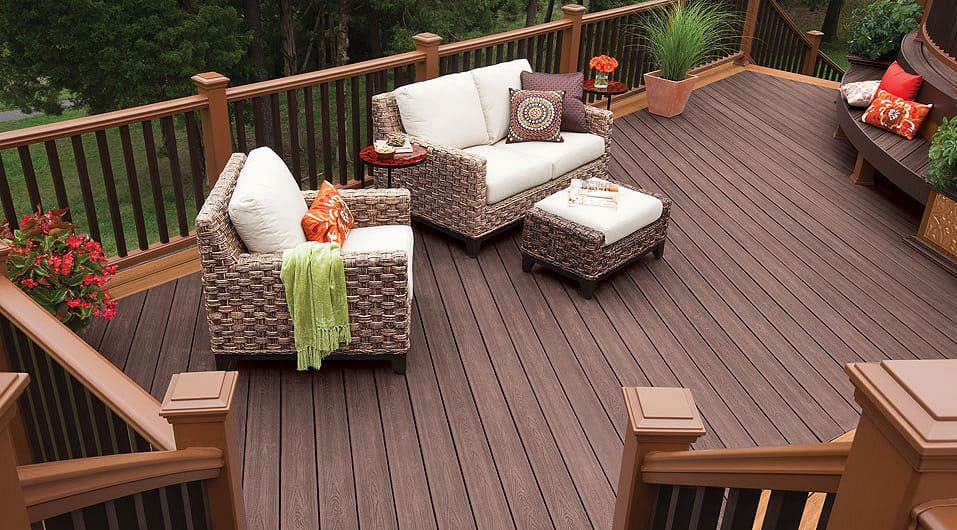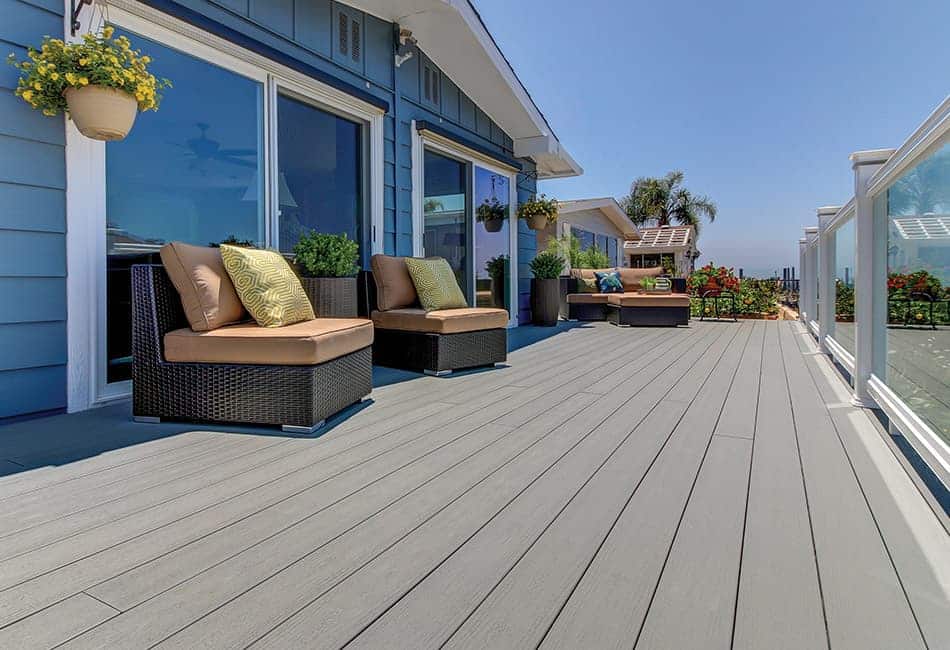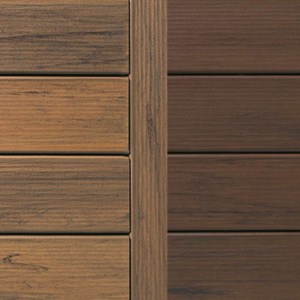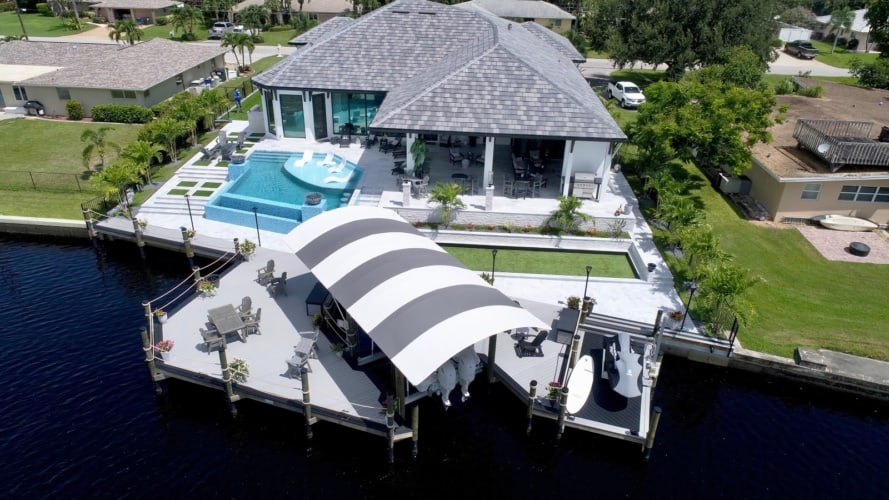
Composite Decking Colors: How to Pick the Perfect Hue
Now that you’ve decided that you’re going to use composite materials for your new deck, it’s time for the fun part – choosing the color!
But the sheer number of composite decking colors available can be overwhelming. You’re not just choosing between light brown and dark brown. From Mountain Redwood to Silver Oak, there are dozens of shades with different undertones, each one evoking a different mood.
For those who aren’t sure where to start, we’ve put together this composite decking color guide. You don’t need to be a professional designer or artist to figure out what colors go well together. Using the tips below, you’ll be able to navigate the color selection process with ease and come out with a great looking deck!
Decking Color Families
Traditional composite decking colors can be separated into four basic groups. These are:
– Brown (ex. Tan, oak, cedar, hickory)
– Reddish-brown (ex. Mahogany, redwood, walnut)
– White (ex. Pearl, cream)
– Grey (ex. Ash, slate, charcoal)
Odds are, you already have a color family in mind for your deck. Now, it’s just a matter of narrowing it down based on the color of your home’s exterior and your own personal taste.
Tips for Picking the Right Color
The following tips are designed to help you pick the perfect hue. Whether you choose to stick to them or not is entirely up to you. After all, it’s your deck – you can choose to design it however you like!
1. Don’t Choose an Exact Match
We all know the old-school rule of making sure that your belt matches your shoes, but you shouldn’t apply that rule to your deck.
Using the same exact color as your home’s exterior for your deck is going to look a bit bland. Instead of matching, you should try to choose colors that complement one another.

In the picture above, the blue exterior contrasts nicely with the grey deck. The white railing and window accents make the blue pop even more!
As you’re planning your deck’s design, think about how you can create an interesting contrast. If your exterior walls are very colorful, like the blue wall above, any neutral-colored decking will work. On the other hand, if your walls are a light neutral color like taupe or beige, a rich red-brown deck is a great complement.
2. Pay Attention to Undertones
Unless you’re working with pure white or pitch black, you should be paying attention to undertones. An undertone is exactly what it sounds like – a color underneath a color.
Take a look at these two shades of brown from TimberTech’s capped composite collection:

They’re both brown, but the color on the left has a yellow undertone, while the color on the right has red undertones.
As you probably remember from the color wheel you learned in school, red, orange, and yellow are warm colors, while green, blue, and purple are cool. While you don’t have to keep all of your undertones exactly the same, it’s recommended that you stick to either warm or cold for both your deck and home exterior.
So for example, if your home’s exterior is grey with blue undertones, you would want to choose decking that has similarly cool green, blue, or purple undertones.
Of course, if your home is stark white, these rules kind of go out the window – you can do whatever you like!
3. Create Flow
Want your deck to feel like an extension of your home and not a completely separate space? Create flow between your home’s interior and exterior by choosing a composite deck color that matches or complements your flooring. That way, when you step outside, it’ll feel like you’re just stepping into another room of your house.

4. Consider Climate
Your deck color isn’t just for looks – it can also serve a functional purpose. Dark surfaces absorb light and heat up more quickly than light-colored surfaces, which reflect light and keep your deck feeling cooler. That’s not to say that a white deck in direct sunlight can’t heat up in the summer months, but it will be a bit kinder to your bare feet than a dark brown deck.
5. Always Order Samples!
In the same way that you should do a strand test before you dye your hair, you should always order a composite decking sample before you decide to order a whole bundle of boards.
A deck is a big purchase, and one that’s not easy to return. Ordering a handful of samples, which are often free, will allow you to see how they look against your house before you go all in.
Find Inspiration for Your Deck Online
We can talk about color theory all day, but you won’t know which colors you like best until you actually see them. Get inspired by the variety of color choices offered by the following high-quality composite decking brands.
WearDeck Colors
Strong, lightweight, and rated for ground contact, WearDeck can be installed practically anywhere – even underwater! WearDeck’s new Barefoot collection includes toned-down shades of their most popular colors, like Sand and Grey, so that they stay up to 30% cooler in direct sunlight.

From left to right: WearDeck Sand, Barefoot Sand, Barefoot Grey, Grey
Trex Decking Colors
A pioneer in the decking industry, Trex was one of the first brands to create a composite board that looked more like real wood than plastic. With fun names like “Tiki Torch” and “Rope Swing”, Trex decking colors vibrant and easy to maintain.

Shades of Grey Trex Decking
TimberTech Decking Colors
Like Trex, TimberTech specializes in capped composites and offers a wide range of color options. All of their decking materials are backed by a 30-Year Limited Fade & Stain Warranty, so the colors will stay rich and vibrant for as long as you have your deck.
Decks & Docks Lumber Company is a proud supplier of WearDeck, Trex, and TimberTech decking materials. Once you’ve decided on the right color, call or visit your nearest location to order everything you need to make your dream deck a reality!
- About the Author
- Latest Posts
Dan has worked for Decks and Docks for over twenty-five years. He managed the original Decks and Docks store in St. Pete, which is our largest store. Dan is simply the best all around. He knows more about this company and our products than probably anyone else. Dan currently works in Sales at our corporate office.
